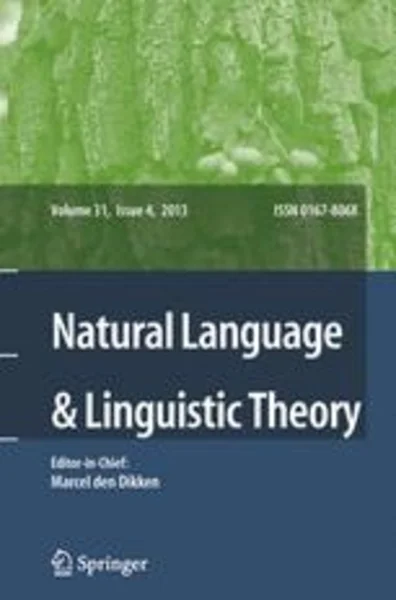-
hungarian pronominal case and the dichotomy of content and form in inflectional morphology
جزئیات بیشتر مقاله- تاریخ ارائه: 1392/03/01
- تاریخ انتشار در تی پی بین: 1392/03/01
- تعداد بازدید: 304
- تعداد پرسش و پاسخ ها: 0
- شماره تماس دبیرخانه رویداد: -
hungarian nouns take some seventeen or so suffixal case inflections, e.g. ház ‘house (nominative)’ ∼ ház-ban ‘in a house (inessive)’. personal pronouns have corresponding case-marked forms but these are not formed by means of suffixal case inflections. instead, postposition-like stems expressing the individual cases are inflected for each pronoun’s person and number in exactly the same way that nouns inflect for possessor agreement or true postpositions inflect for a pronominal complement (inessive benn-e ‘in him’, benn-ük ‘in them; cf. könyv-e ‘his book’, könyv-ük ‘their book’ from the noun könyv; mögött-e ‘behind him’, mögött-ük ‘behind them’ from the postposition mögött). this manner of case marking embodies a highly unusual pattern of ‘functor-argument reversal’, which is problematic for many models of morphosyntax.
مقالات جدیدترین رویدادها
-
استفاده از تحلیل اهمیت-عملکرد در ارائه الگوی مدیریت خلاقیت سازمانی و ارائه راهکار جهت بهبود
-
بررسی تاثیر ارزش وجوه نقد مازاد بر ساختار سرمایه شرکت های پذیرفته شده در بورس اوراق بهادار تهران
-
بررسی تأثیر سطح افشای ریسک بر قرارداد بدهی شرکت های پذیرفته شده در بورس اوراق بهادار تهران
-
بررسی تأثیر رتبه بندی اعتباری مبتنی بر مدل امتیاز بازار نوظهور بر نقد شوندگی سهام با تأکید بر خصوصی سازی شرکت ها
-
تأثیر آمیخته بازاریابی پوشاک ایرانی بر تصویر ذهنی مشتری پوشاک ایرانی (هاکوپیان)
-
مقایسه تأثیر آموزش بر مبنای نقشه مفهومی با روش تلفیقی بر یادگیری درس فرآیند پرستاری دانشجویان پرستاری دانشگاه علوم پزشکی تبریز
-
چگونه می توانم اختلال در خواندن مهسا را بهبود ببخشم؟
-
دندان دوتایی ثنایای پیشین فک بالا: معرفی یک مورد
-
شناسایی و ارزیابی ریسک آلاینده های هیدروکربنی موجود در آب خام مصرف شده و پساب خروجی از پالایشگاه
-
kinetics and equilibriums for adsorption of poly(vinyl alcohol) from aqueous solution onto natural bentonite
مقالات جدیدترین ژورنال ها
-
مدیریت و بررسی افسردگی دانش آموزان دختر مقطع متوسطه دوم در دروان کرونا در شهرستان دزفول
-
مدیریت و بررسی خرد سیاسی در اندیشه ی فردوسی در ادب ایران
-
واکاوی و مدیریت توصیفی قلمدان(جاکلیدی)ضریح در موزه آستان قدس رضوی
-
بررسی تاثیر خلاقیت، دانش و انگیزه کارکنان بر پیشنهادات نوآورانه کارکنان ( مورد مطالعه: هتل های 3 و 4 ستاره استان کرمان)
-
بررسی تاثیر کیفیت سیستم های اطلاعاتی بر تصمیم گیری موفق در شرکتهای تولیدی استان اصفهان (مورد مطالعه: مدیران شرکتهای تولیدی استان اصفهان)
-
ماهیت رجوع از شهادت و پیامدهای آن
-
بررسی جرم قاچاق انسان در اسناد بین المللی و حقوق داخلی ایران
-
منقول یا غیر منقول بودن دعوای الزام به تنظیم سند رسمی در حقوق ایران
-
تاثیر اخلاق کار اسلامی بر عدالت سازمانی
-
فراترکیب پژوهش شبکه های اجتماعی مجازی در ایران




سوال خود را در مورد این مقاله مطرح نمایید :